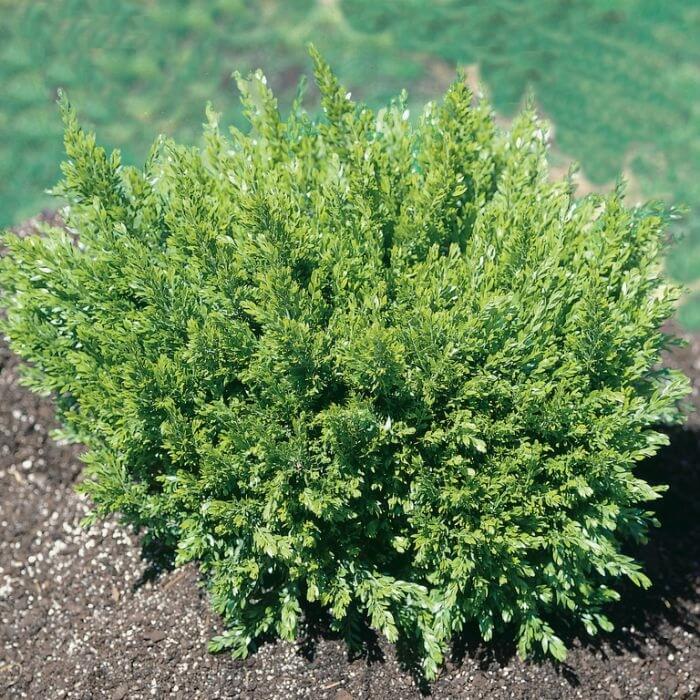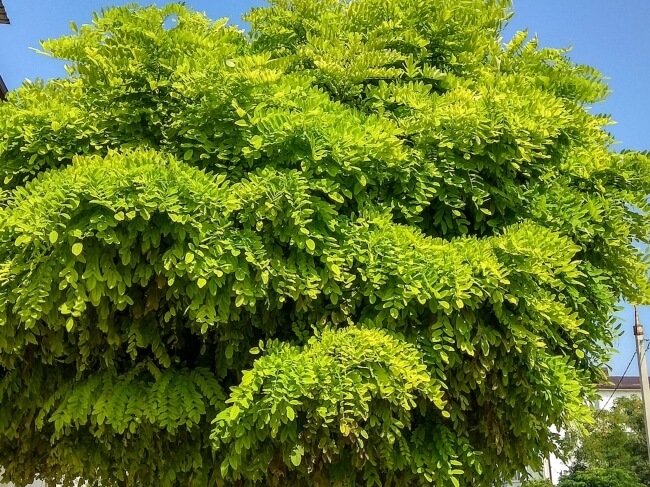Acacia ‘Honey Bun’ is an evergreen wattle shrub that is hardy, easy to grow and maintain. This compact shrub is an attractive plant all year round. It blooms in spring producing pretty soft yellow flowers.
This versatile and popular native plant works well as a feature plant, low hedge, or border plant. This gardening guide is packed full of advice on how to successfully grow and care for Acacia ‘Honey Bun’.
More...
Botanical name: | Acacia howittii ‘Honey Bun’ |
|---|---|
Botanical family: | Fabaceae |
Introducing Acacia ‘Honey Bun’

Source: Flower Power
Acacia is a large genus of shrubs and trees commonly known as wattles or acacias. Wattles grow throughout Australia. They are the largest genus of flowering plants in Australia with over 1000 species of Acacia.
Refer to our main article: Wattle – How to Grow Acacia in Australia
Acacia howittii is a species of the Fabaceae family and is native to Australia. It is known by the common name Sticky Wattle or Howitts Wattle. In its natural habitat, it is found in the southern Gippsland hills of Victoria.
Acacia howittii are large shrubs or small trees and can grow to a height of 5-8 m. One of the prettiest cultivars of Acacia howittii is Acacia howittii ‘Honey Bun’.
Acacia ‘Honey Bun’ is a compact, perennial, low shrub that grows to a maximum height of around 1-1.5 m and spreads to a similar width. This dwarf wattle is an evergreen and looks fantastic all year round.
The Acacia ‘Honey Bun’ has soft weeping foliage and attractive lime green leaves that cascade to the ground. It is a quick-growing low shrub that produces beautiful soft yellow flowers in spring.
When established, Acacia ‘Honey Bun’ is drought tolerant and can also withstand light frost. The plant is also suitable for coastal areas.
The Best Soil for Acacia howittii ‘Honey Bun’
This wattle dwarf Acacia howittii grows well in a wide variety of soils. While they can do well in clay soil, they prefer well-drained sandy soil.
Like most native plants, Acacia howittii ‘Honey Bun’ is used to low nutrient Australian soils. The plant won’t need additional fertilisers added to the soil to thrive in your garden.
Where to Position Acacia ‘Honey Bun’ in Your Garden
Acacia ‘Honey Bun’ will happily grow in shade or full sun. As noted above this Australian native prefers well-drained soil. Acacia ‘Honey Bun’ is perfect for a low hedge, windbreak, or feature border along fence lines or paths, making it a versatile native plant for gardeners. It grows in an attractive mounded shape.
This beautiful wattle is the perfect companion plant with other Australian grasses, trees and shrubs.


Get Your Free Guide:
Master Growing Australian Natives eBook
A Must Have Complete Guide for Every Australian Garden
Get Your Free Guide:
Master Growing Australian Natives eBook
A Must Have Complete Guide for Every Australian Garden
How to Grow Acacia ‘Honey Bun’

Source: Diaco's Garden Nursery
Acacia ‘Honey Bun’ is a tough, hardy Australian native shrub. It will be a low maintenance addition to your garden and will mostly look after itself. It needs very little ongoing attention.
Until the plant becomes established in your garden, you will need to water the wattle regularly. After about 3 months you can dial back watering in accordance with weather conditions.
Acacia ‘Honey Bun’ are drought tolerant plants and have low water requirements. Water the tea tree during extended hot, dry periods but otherwise rainfall should be sufficient to keep this wattle healthy and happy. You should avoid overwatering. Mulch around the root zone to help retain water.
These native plants can grow quite happily in low nutrient soil so don’t need additional fertiliser to thrive. To help flowering you can use some all-purpose Australian native plant fertiliser. Avoid general fertilisers with high phosphate content.
Acacia ‘Honey Bun’ should be pruned to keep the shrub neat and bushy. The best time to prune is immediately after flowering. This native wattle will also tolerate more severe pruning if required or if you are trying to form a hedge.
Acacia howittii ‘Honey Bun’ are problem-free and are not typically impacted by pests and diseases.
Acacia ‘Honey Bun’ Frequently Asked Questions
How long does it take for Acacia ‘Honey Bun’ to grow?
Acacia howittii ‘Honey Bun’ is a fast-growing plant. This makes it a popular choice for gardeners and landscapers. Given Honey Bun is a dwarf Acacia howittii variety it won’t grow to an uncontrollable tall and will remain a compact plant, especially if pruned consistently.
When does Acacia ‘Honey Bun’ flower?
Acacia howittii ‘Honey Bun’ flowers in spring. Note that this isn’t a prolifically flowering plant. It will bring some nice colour to your garden when in bloom, but also looks great when not flowering.
This Acacia howittii cultivar produces attractive small soft yellow flowers which contrast beautifully with the green foliage.
Wrapping Up Our Acacia ‘Honey Bun’ Guide
This versatile and tough shrub is a great choice for landscaping Australian gardens. Whether it’s used as a feature plant, windbreak or low hedge you can’t go wrong with this Aussie native.
Not only does Acacia ‘Honey Bun’ look great, but it is a low maintenance, easy to grow plant that can thrive in poor soil and is drought tolerant. Caring for the plant is simple and typically just requires an annual trim after flowering.
This native plant will produce a pretty display of soft yellow flowers in spring while adding texture to your garden all year round. If you have any questions about how to grow Acacia ‘Honey Bun’, get in touch.
Published on August 23, 2023 by Gary Clarke
Last Updated on January 26, 2025




